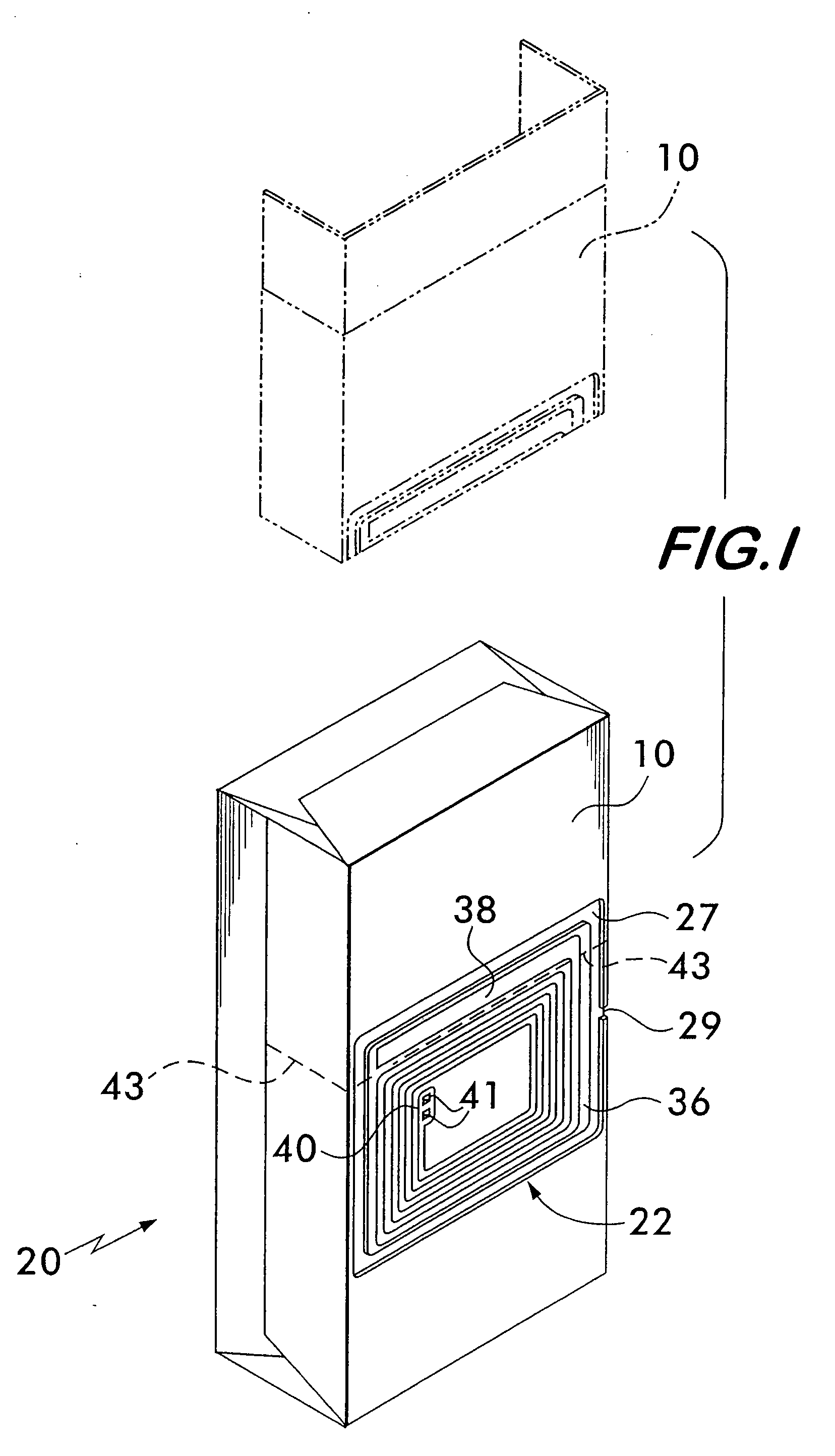Security tag for cigarette pack
a technology for security tags and cigarettes, applied in the field of security tags, can solve the problems of increasing the complexity of the manufacturing machinery required for production, increasing the processing time and cost per unit, and wasting resources used in the first instance to form the security tag,
- Summary
- Abstract
- Description
- Claims
- Application Information
AI Technical Summary
Benefits of technology
Problems solved by technology
Method used
Image
Examples
embodiment 22
[0047]FIG. 15 shows the cutting edges 132A, 132B, 132C and 132D of the cutter 132 severing the metal layer 14 to form the antenna 124; in particular, these edges 132A-132D sever the non-adhesively secured portions (which corresponds to portion 135 as described previously) of the metal layer 14 but not the adhesively-secured portions of the metal layer 14 which forms the antenna 124. FIG. 16 is similar to the view of FIG. 15 but with the upper die 130 lifted away and with the severed portion 135 removed. Thus, the result of this process is a dipole antenna 124 (having elements 124A and 124B) which is isolated from the remaining portion ofthe metal layer 14, and wherein the metal layer 14 forms a nearly complete metal path around the central portion 127 except that it is interrupted by the channel 129, as can be seen most clearly in FIG. 13. It should noted that the presence of the channel 129 (e.g., approximately 0.10 inches), as discussed previously with respect to the first securit...
first embodiment
[0048]Once the antenna 124 is formed, the security tag 122 is completed by the application of a chip strap 125A (to form an RFID security tag) across the facing ends of dipole elements 124A and 124B of the antenna 124, as shown in FIGS. 11 and 14. As mentioned previously, the chip strap 125A comprises an RFID IC 125 and terminals 127A and 127B (FIG. 14) that are electrically coupled (e.g., crimp / adhesive mentioned previously with respect to the first embodiment) to respective dipole elements 124A and 124B to form the RFID security tag 122. Chip straps are known in the art, such as those shown in U.S. Pat. No. 6,940,408 (Ferguson, et al.); U.S. Pat. No. 6,665,193 (Chung, et al.); U.S. Pat. No. 6,181,287 (Beigel); and U.S. Pat. No. 6,100,804 (Brady, et al.), as well as in A.Ser. No. 60 / 730,053 and all of whose disclosures are incorporated by reference herein.
[0049]Once the security tag 122 is formed and the liner 20 and cigarette pack 16 assembled, to facilitate the deactivation of a ...
PUM
 Login to View More
Login to View More Abstract
Description
Claims
Application Information
 Login to View More
Login to View More - R&D
- Intellectual Property
- Life Sciences
- Materials
- Tech Scout
- Unparalleled Data Quality
- Higher Quality Content
- 60% Fewer Hallucinations
Browse by: Latest US Patents, China's latest patents, Technical Efficacy Thesaurus, Application Domain, Technology Topic, Popular Technical Reports.
© 2025 PatSnap. All rights reserved.Legal|Privacy policy|Modern Slavery Act Transparency Statement|Sitemap|About US| Contact US: help@patsnap.com



